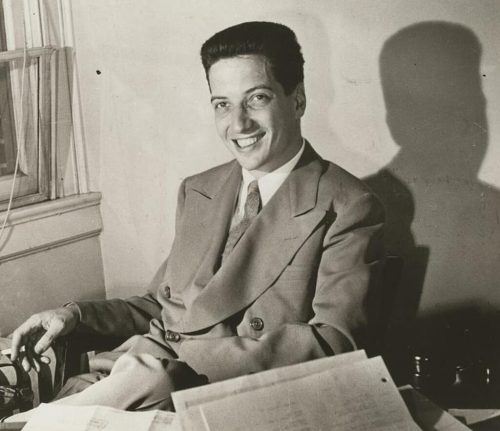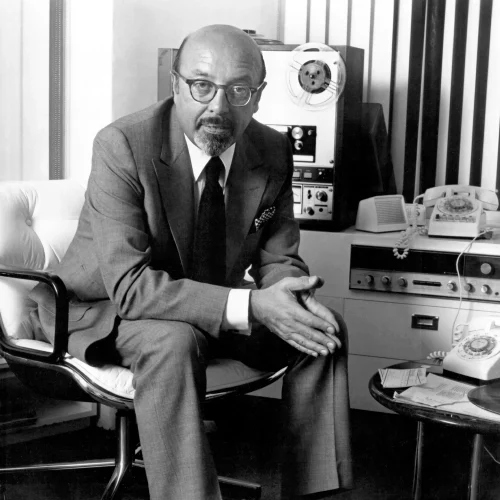Overview
“I Don’t Hear a Single” What Does An A&R Representative Do?”
A.K.A.

In the ever-evolving music industry, the role of an A&R (Artists and Repertoire) representative remains crucial. A&R representatives are responsible for scouting and nurturing talent, guiding artists’ careers, and helping them reach their full potential.
Discover GRAMMY GO courses exclusively on Coursera
The Evolution of A&R Representatives
The digital age has revolutionized the music industry, and A&R representatives have had to adapt to these changes. The internet and social media platforms have made it easier for artists to create and release music independently, bypassing the traditional label system. As a result, A&R representatives now have a more diverse pool of talent to choose from and must navigate the complexities of the digital landscape.
In the past, A&R representatives relied heavily on live performances and physical demos to discover artists. They would attend live shows, scour local scenes, and rely on industry connections to find promising artists. Today, they utilize online platforms, streaming data, and social media metrics to identify emerging talent. This shift has made the role of A&R representatives more data-driven, with an emphasis on analyzing audience engagement, streaming numbers, and social media trends.
The Changing Landscape of Record Labels
The role of A&R representatives has also shifted due to changes in the structure and priorities of record labels. In the past, major record labels dominated the industry and had dedicated A&R departments. These departments were responsible for discovering and signing artists, overseeing the recording process, and assisting in marketing and promotion. However, in recent years, major labels have focused more on established artists, leading to a rise in independent A&R representatives and smaller labels.
Responsibilities of an A&R Representative
What exactly does an A&R rep do? It’s not just finding a talent, but nurturing through production, development and marketing.
Scouting and Nurturing Talent
One of the primary responsibilities of an A&R representative is to find and sign talented artists. This involves actively seeking out new talent, attending live performances, networking with industry professionals, and staying up-to-date with music trends. A&R representatives must have a keen ear for exceptional music and a knack for identifying artists with commercial potential.
Once a talent is discovered, A&R representatives play a crucial role in nurturing their careers. This includes providing guidance and support, helping them refine their artistic vision, and connecting them with the right producers, songwriters, and collaborators. A&R representatives act as a bridge between the artist and the label, facilitating a creative and productive working relationship.
Overseeing the Recording Process and Artist Development
A&R representatives are involved in every aspect of the recording process. They work closely with artists to select the right songs, choose suitable producers and engineers, and ensure that the final product aligns with the artist’s vision and the label’s objectives. A&R representatives also play a vital role in artist development, helping them grow and evolve their sound while staying true to their artistic integrity.
Assisting with Marketing and Promotion
In addition to their involvement in the recording process, A&R representatives collaborate with marketing and promotion teams to create effective strategies for promoting and distributing an artist’s music. They work closely with publicists, social media managers, and other industry professionals to develop comprehensive marketing campaigns, secure media coverage, and maximize exposure for the artist.
Famous A&R Professionals
Throughout the history of the music industry, there have been several notable A&R professionals who have played a significant role in shaping the careers of legendary artists. These individuals have demonstrated a keen eye for talent and a deep understanding of the industry.
- John Hammond: Known for discovering and signing legendary artists such as Bob Dylan, Bruce Springsteen, Benny Goodman, Leonard Cohen, Pete Seeger, Aretha Franklin and Billie Holiday. In 1971, Hammond was awarded a GRAMMY Trustees Award, as he was arguably responsible for hundreds of GRAMMY awards!
- Clive Davis: A&R executive responsible for signing iconic artists such as Whitney Houston, Billy Joel, Chicago, Pink Floyd, Alicia Keys and Santana. He later was president of Columbia Records and Arista Records, and then founded J Records. He has won four GRAMMY awards as a producer and was even inducted into the Rock and Roll Hall of Fame (as a non-performer)
- Ahmet Ertegun: Co-founder of Atlantic Records and instrumental in signing artists like Ray Charles, Led Zeppelin, and Aretha Franklin.
Salary Expectations for A&R Representatives
The salary of an A&R representative can vary depending on factors such as experience, location, and the size of the record label or company they work for. Entry-level A&R representatives may start with a relatively modest salary, ranging from $30,000 to $50,000 per year. However, as they gain experience and prove their ability to discover and develop successful artists, their earning potential can increase significantly, with some top A&R representatives earning six-figure salaries.
$43K
AVG

How to Become an A&R Representative
Becoming an A&R representative requires a combination of musical knowledge, industry connections, and a passion for discovering and nurturing talent. Here are some steps aspiring A&R representatives can take to pursue a career in this field:
- Develop a deep understanding of music: A&R representatives must have a comprehensive knowledge of various genres and a discerning ear for exceptional talent. Stay up-to-date with current music trends, attend live shows, and immerse yourself in the industry.
- Build a strong network: Networking is crucial in the music industry. Attend industry events, connect with artists, producers, and other industry professionals, and build relationships that can open doors and provide opportunities.
- Gain experience: Start by gaining experience in related roles, such as interning at a record label, working at a music venue, or assisting an A&R representative. This hands-on experience will provide valuable insights into the industry and help develop essential skills.
- Develop business acumen: A&R representatives must understand the business side of the music industry. Familiarize yourself with contracts, copyright laws, music publishing, and marketing strategies. This knowledge will enable you to negotiate deals and make informed decisions.
- Stay connected and adaptable: The music industry is constantly evolving, so it’s essential to stay connected and adaptable. Embrace new technologies, platforms, and trends, and continuously seek opportunities to expand your knowledge and skill set.
How A&R Has Changed in the Digital Age
The digital age has revolutionized the music industry, and A&R representatives have had to adapt to these changes. The internet and social media platforms have made it easier for artists to create and release music independently, bypassing the traditional label system. As a result, A&R representatives now have a more diverse pool of talent to choose from and must navigate the complexities of the digital landscape.
In the past, A&R representatives relied heavily on live performances and physical demos to discover artists. Today, they utilize online platforms, streaming data, and social media metrics to identify emerging talent. This shift has made the role of A&R representatives more data-driven, with an emphasis on analyzing audience engagement, streaming numbers, and social media trends.
How to Be Noticed by A&R Representatives
For aspiring musicians, capturing the attention of A&R representatives can be a game-changer in their careers. While there is no guaranteed formula, there are several strategies that can increase your chances of being noticed:
- Create exceptional music: Focus on honing your craft and creating high-quality music that stands out from the crowd. A&R representatives are constantly searching for unique and exceptional talent.
- Build an online presence: Utilize social media platforms, streaming services, and websites to showcase your music and engage with your audience. Develop a strong online presence and cultivate a dedicated fan base.
- Network and collaborate: Attend industry events, connect with other musicians, producers, and industry professionals. Collaborating with established artists or working with reputable producers can increase your visibility and attract the attention of A&R representatives.
- Submit your music directly: Research record labels and A&R representatives who specialize in your genre or style of music. Submit your music directly to them, ensuring that your submissions are professional and tailored to their specific interests.
- Utilize music industry platforms: Platforms such as SoundCloud, Bandcamp, and Spotify for Artists provide opportunities for exposure and discovery. Optimize your presence on these platforms and engage with their features for artists.
The role of an A&R representative in the music industry remains essential, albeit in a rapidly changing landscape. These professionals serve as talent scouts, career guides, and advocates for artists. They play a crucial role in shaping the industry by discovering and developing new talent, overseeing the recording process, and assisting with marketing and promotion. Aspiring musicians can increase their chances of being noticed by A&R representatives by creating exceptional music, building an online presence, networking, and submitting their music directly. While the industry continues to evolve, the core essence of being an A&R representative remains the same: finding and nurturing exceptional talent that will shape the future of music.






















